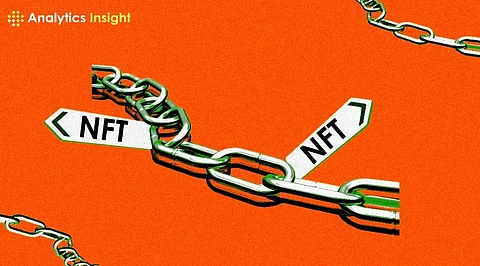
- Insights
- Cryptocurrencies
- Stocks
- White Papers
- Industry
- Geography
- Insights
- Cryptocurrencies
- Stocks
- White Papers
- Industry
- Geography


Non-fungible tokens (NFTs) have revolutionized the digital art and collectibles world. While Ethereum has been the predominant blockchain for NFT creation and trading, rising gas fees and network congestion have led creators and investors to explore alternatives. This comprehensive guide delves into how to mint NFTs on various blockchains beyond Ethereum, each offering unique advantages.
Minting an NFT involves converting digital files into crypto collectibles or digital assets on a blockchain. The process creates a digital certificate of ownership that can be bought, sold, or traded.
Binance Smart Chain offers lower transaction fees and faster speeds compared to Ethereum. It's becoming a popular choice for creators looking for cost-effectiveness and efficiency.
Create a Wallet: Set up a Binance wallet or a compatible wallet like MetaMask.
Acquire BNB: Buy Binance Coin (BNB) to pay for transaction fees.
Choose a Platform: Select a BSC-based NFT marketplace like BakerySwap or Treasureland.
Upload Your File: Follow the platform's process to upload your digital file and add details like a title, description, and royalties.
Mint Your NFT: Complete the minting process by paying the gas fee in BNB.
Developed by Dapper Labs, the creators of CryptoKitties, Flow is designed for extensive scaling without sharding, making it efficient for NFTs and decentralized apps (dApps).
Set Up a Flow Wallet: Use the Blocto or Dapper wallet.
Acquire Flow Tokens: Purchase Flow tokens to cover transaction fees.
Select a Marketplace: Find a marketplace that supports Flow, like VIV3 or NBA Top Shot.
Upload and Mint: Upload your asset, fill in the details, and mint your NFT on the Flow blockchain.
Minting on Tezos
Why Tezos?
Tezos is an energy-efficient blockchain known for its minimal carbon footprint. Its lower gas fees make it an attractive platform for eco-conscious artists and creators.
How to Mint on Tezos:
Tezos Wallet: Create a wallet compatible with Tezos, such as Temple or Kukai.
Obtain XTZ Tokens: Buy Tezos (XTZ) to use as gas fees.
Choose a Marketplace: Use Tezos-based platforms like Hic et Nunc or Kalamint.
Mint Your Artwork: Upload your digital file, add necessary details, and mint your NFT using XTZ.
Solana stands out for its high throughput and low transaction costs, making it ideal for high-frequency trading and projects with a large number of NFTs.
Solana Wallet: Set up a Solana wallet such as Phantom or Sollet.
Acquire SOL Tokens: Buy Solana (SOL) tokens for fees.
Marketplace Selection: Choose a Solana-based NFT platform like Solsea or Metaplex.
Upload and Mint: Complete the minting process by uploading your file and paying the fee in SOL.
Polygon (formerly Matic Network) offers Ethereum compatibility with faster speeds and lower fees, making it an excellent option for creators seeking Ethereum's security without its downsides.
Ethereum-Compatible Wallet: Use wallets like MetaMask or Trust Wallet.
Get MATIC Tokens: Obtain MATIC for transaction fees.
Marketplace Options: Opt for platforms like OpenSea that support Polygon.
Mint Your NFT: Mint on Polygon following the marketplace's instructions.
Transaction Fees: Compare gas fees across blockchains, especially important for large-scale or frequent minting.
Blockchain Features: Assess the technical features and scalability of each blockchain.
Marketplace Availability: Ensure there are active marketplaces supporting your chosen blockchain.
Community and Ecosystem: Consider the size and activity of the community around each blockchain for better exposure and sales potential.
Environmental Impact: For environmentally conscious creators, the energy efficiency of the blockchain can be a deciding factor.
